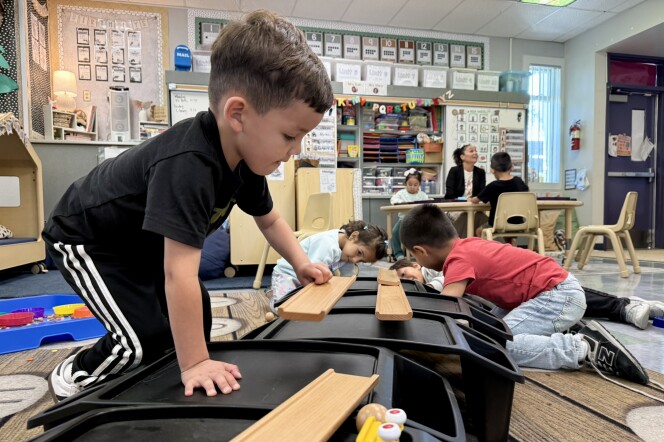With our free press under threat and federal funding for public media gone, your support matters more than ever. Help keep the LAist newsroom strong, become a monthly member or increase your support today.
Pinhole Camera Won't Offer Wallet-Sized Photos
LIANE HANSEN, host:
Technologically, the camera obscura, or pinhole camera, sits on the opposite end of the spectrum from digital cameras. But six artists in Irvine, California still see an enormous potential for the pinhole camera, especially in their latest work, the Great Picture Project. Rob Johnson and five other artists have converted a hangar on the old El Toro Marine Air Station into a giant camera obscura. They plan to take a picture of the tarmac and the control tower. If all goes well, the Great Picture Project could lay claim to two titles in the Guinness Book of World Records: World's Largest Camera and World's Largest Photo. Joining us from his home in Fullerton, California is artist Rob Johnson. Welcome to the show, Rob.
Mr. ROB JOHNSON (Artist): Thank you very much.
HANSEN: Give us a brief primer on how a pinhole camera works.
Mr. JOHNSON: It's basically a box with a small hole in one end and through that hole onto the opposing surface inside the box is projected a sharp, clear, upside down and left to right reversed image, and that technology goes back hundreds of years, actually quite far pre-dates the invention of photography actually.
HANSEN: All right, how big is your camera? Does the size actually affect how the process works? And what do you use as film?
Mr. JOHNSON: Well, our camera is a building, a very large building. It's one of the hangars on the former Marine Corps station El Toro. Our image will be roughly 28 feet tall or about the height of a three-story building, and 108-feet wide, and it will be recorded on an immense piece of muslin and canvass-like material that has been sensitized with black and white light sensitive emulsion called liquid light, which we will be hand applying to the surface of the fabric and then hoisting the fabric into place for the image to record.
HANSEN: Now, how big is your aperture? If the building is the box and the doors are where you have the hole, how big is the hole?
Mr. JOHNSON: The hole is three quarters of an inch in diameter. So, in terms of camera technology, that's a very, very small aperture for those people that are familiar with camera F-stops. I think we've figured out that our F-stop is roughly F896.
HANSEN: How long exposure do you need? And what do you do? I mean, the sun's going to change, is that going to have any affect on how the picture turns out?
Mr. JOHNSON: What we're going to be doing over the next week or so is hanging up some sensitized test fabrics and testing the exposure. We think that the exposure will take somewhere between five and ten days, but we're not absolutely certain, which is why we're running the test.
HANSEN: How do you develop the film?
Mr. JOHNSON: Once the exposure is done, we have to pull this piece of fabric down onto the ground and we can't process it on site. We have to move it in a light-tight container to another location and we have had a company make for us the world's largest photographic tray. It's about 35 feet wide and 120 feet long and it will be four inches deep, and the process we're thinking will take somewhere in the nature of 600 gallons of chemistry to bring this image up.
HANSEN: What happens to the camera? What happens to the picture?
Mr. JOHNSON: The picture, we hope, will find a home in some museum. We're going to bring it back to the hangar building that we're creating it in and re-suspend it and then it will have to come down and go into at least temporary storage somewhere.
HANSEN: Sounds like the biggest one-shot disposable camera I've ever heard.
Mr. JOHNSON: That's the comment that I made the other day, because the building that we're photographing in won't exist anymore. Somebody asked me yesterday if we were going to do a before and after kind of picture and I said, well, I don't think that's possible because the building that we're in will be torn down.
HANSEN: Rob Johnson and five other artists have built a giant pinhole camera in a hangar on the old El Toro Marine Air Corps Station. He spoke to us from his home in Fullerton, California. Rob, thank you very much.
Mr. JOHNSON: Thank you very much. Transcript provided by NPR, Copyright NPR.







